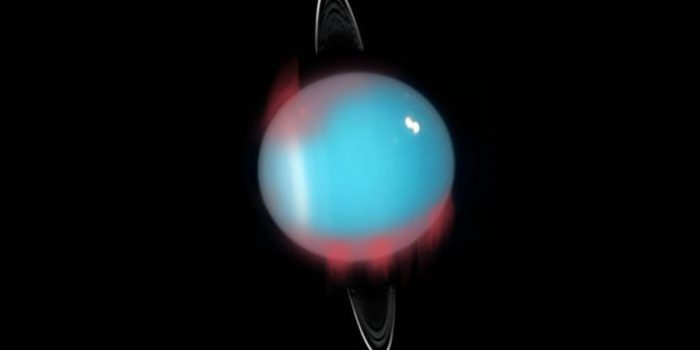Astronomers have recently made an exciting discovery, finally confirming the presence of infrared auroras on Uranus, the distant ice giant in our solar system. This finding is a major leap in our understanding of this mysterious planet and carries significant implications for planetary science and our exploration of similar celestial bodies in the universe.
“The temperature of all the gas giant planets, including Uranus, are hundreds of degrees Kelvin/Celsius above what models predict if only warmed by the Sun, leaving us with the big question of how these planets are so much hotter than expected?” says astrophysicist Emma Thomas of the University of Leicester in the UK.
“One theory suggests the energetic aurora is the cause of this, which generates and pushes heat from the aurora down towards the magnetic equator.”

Auroras, those mesmerizing light displays in the sky, happen when high-energy particles from space interact with a planet’s magnetic field. While we often associate them with Earth, they can take on different forms on other planets. In the case of Uranus, scientists had long suspected that it hosted ultraviolet and possibly X-ray auroras, but tangible evidence had eluded them.
The breakthrough occurred in 2006 when a team of researchers used a specialized instrument called NIRSPEC at the Keck Observatory to conduct an in-depth study of Uranus. They homed in on a particular ionized particle known as H3+, which emits light that changes with temperature.
Their analysis revealed something extraordinary: the density of H3+ increased in Uranus’s atmosphere without any corresponding temperature change. This observation perfectly matched the characteristics of infrared auroras, providing unequivocal proof of their existence on Uranus.
This discovery is profound for several reasons. It helps unravel some of the longstanding mysteries surrounding Uranus, particularly its peculiar magnetic field. Uranus boasts a magnetic field like no other in our solar system – it’s tilted and highly asymmetric, making it an astronomical enigma. The connection between these newfound auroras and the planet’s magnetic field offers insights into the underlying dynamics of Uranus.
Furthermore, the significance of this finding extends far beyond our immediate neighborhood. It has broader implications for the study of exoplanets, especially those that share similarities with Uranus and Neptune. By examining how these distant worlds glow, scientists can glean valuable information about their atmospheres and magnetic fields.
Essentially, the lessons learned from Uranus can be applied to assess the potential habitability of exoplanets and gain a deeper understanding of conditions on these remote celestial bodies.
In essence, the confirmation of infrared auroras on Uranus marks a significant stride in our comprehension of this unique ice giant and holds the promise of enriching our knowledge of exoplanets throughout the cosmos.
This discovery not only resolves a long-standing scientific puzzle but also beckons us to continue exploring the enigmas of distant worlds and their potential as hospitable environments. It’s a testament to the inquisitive nature of human exploration and the boundless wonders of our vast universe.
“This paper is the culmination of 30 years of auroral study at Uranus, which has finally revealed the infrared aurora and begun a new age of aurora investigations at the planet,” she says.
“Our results will go on to broaden our knowledge of ice giant auroras and strengthen our understanding of planetary magnetic fields in our Solar System, at exoplanets and even our own planet.”


